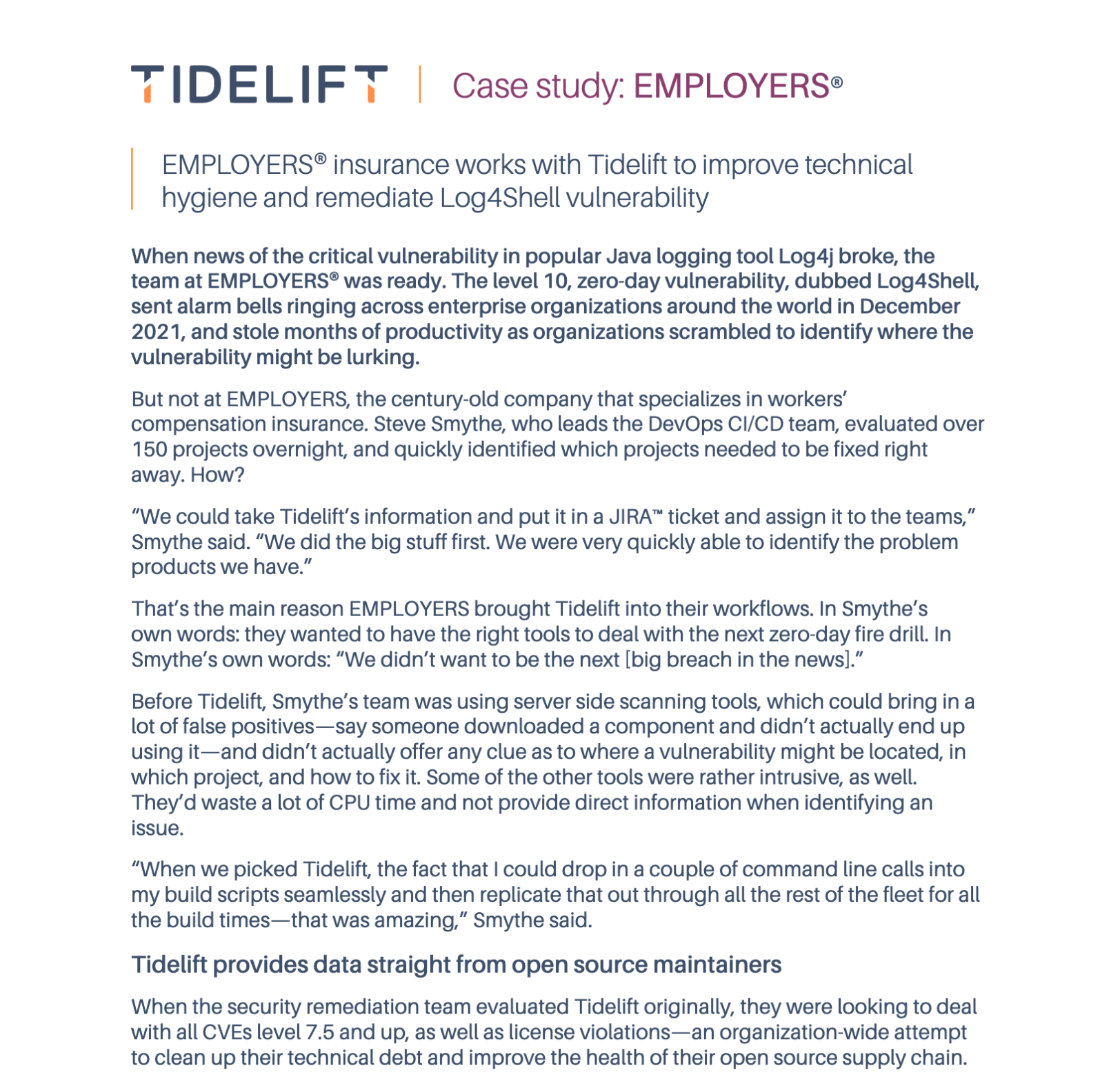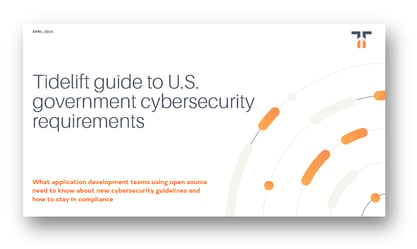Many organizations want a centralized view of the open source in use in their applications so they can diagnose and mitigate security vulnerabilities across the organization quickly, enforce security and licensing policies, and create up to date software bills of materials (SBOMs).
Tidelift provides the tools, data, and strategies that help organizations assess risk and improve the health, security, and resilience of the open source used in their applications.
Get a complete view of open source in use across the organization, including transitive dependencies. Import your existing SBOMs, or dynamically generate up-to-date SBOMs after every build.
Make more informed decisions with human-researched, validated, and normalized metadata from Tidelift and maintainer partners—and share them across the organization.
Centralize open source security, maintenance, and licensing policies and standards while empowering developers to self-serve from catalogs of approved components.
Tidelift partners directly with maintainers behind thousands of commonly-used open source projects and pays them to attest that their project’s security and maintenance practices follow industry and government secure development practices.
Enhanced SBOMs for open source, with first-party attestation data from the maintainers behind thousands of open source packages that go into your software.
A standardized attestations report, to be used as evidence that the open source dependencies in your organization’s applications follow secure software development best practices.
Access to the data behind the attestations, so organizations can make more informed choices on the open source they use

From a security remediation point of view... no other vendor came close to the level of detail Tidelift provides—because Tidelift works directly with the open source maintainers of the projects EMPLOYERS and other enterprise organizations depend on.
“That relationship is pure gold. The openness you have with the open source maintainers and the ability to talk with the consumers about how we’re using their products—we have a direct line of communication from their fixes and what versions we should be using.”
